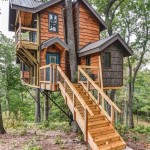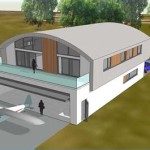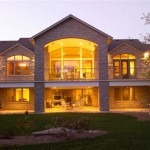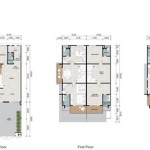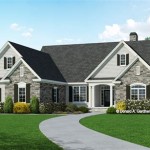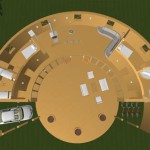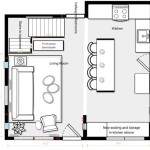Simple Boat House Plans: A Comprehensive Guide
Boat houses provide essential protection for watercraft from the elements, extending their lifespan and reducing maintenance costs. They also offer a convenient and secure space to store boating equipment and supplies. Simple boat house plans cater to boat owners seeking cost-effective and manageable construction projects, often prioritizing functionality and ease of assembly. This article will explore the key considerations, essential components, and different types of simple boat house plans, providing a comprehensive guide for individuals considering this type of structure.
The simplicity of these plans doesn't necessarily equate to low quality. Instead, it emphasizes efficient design, readily available materials, and straightforward construction techniques. This approach reduces construction time and labor costs, making boat houses accessible to a wider range of boat owners, including those with limited building experience.
Key Considerations Before Construction
Prior to embarking on a boat house construction project, several crucial factors must be evaluated to ensure a successful outcome. These considerations encompass regulatory compliance, site conditions, boat specifications, and material selection.
Regulatory Compliance: Navigating local building codes and regulations is paramount. Most jurisdictions require permits for boat house construction, and these permits often entail detailed plans, structural engineering reports, and environmental impact assessments. Zoning regulations may dictate setbacks from the shoreline, height limitations, and permissible materials. Failing to comply with these regulations can result in costly fines and potential demolition orders. Researching and obtaining all necessary permits before starting construction is an indispensable step.
Site Conditions: The existing site conditions significantly influence the design and construction process. Soil stability is a critical factor, particularly for boat houses situated on the water's edge. Loose or unstable soil may necessitate the use of pilings or other foundation stabilization techniques. Water depth and tidal fluctuations must be considered to ensure the boat house is adequately elevated to prevent flooding. Wind exposure also plays a significant role, as strong winds can exert substantial force on the structure. The chosen location should ideally offer some degree of natural protection from prevailing winds. Furthermore, accessibility to the site for construction equipment and materials should be assessed.
Boat Specifications: The dimensions and weight of the boat that the boat house will house are essential parameters. The boat house must be large enough to comfortably accommodate the boat, with sufficient clearance on all sides for safe maneuvering. The height of the entrance needs to be adequate to allow the boat to enter and exit without risk of damage. The weight-bearing capacity of the structure, especially the lifting mechanism if one is included, must be sufficient to safely handle the boat's weight. Future considerations are also important; if a larger boat is anticipated in the future, the boat house should be designed with the potential for future expansion.
Material Selection: The choice of building materials directly impacts the durability, longevity, and aesthetic appeal of the boat house. Pressure-treated lumber is a common choice for framing due to its resistance to rot and insect damage. Coastal environments may necessitate the use of corrosion-resistant fasteners and hardware. Roofing materials should be chosen based on their ability to withstand the elements, with options ranging from asphalt shingles to metal roofing. Siding materials can vary widely, from wood to vinyl, depending on the desired aesthetic and maintenance requirements. The selection of materials should also consider the overall budget, as material costs can significantly impact the total project expense.
Essential Components of Simple Boat House Plans
Regardless of the specific design, certain components are fundamental to virtually all simple boat house plans. These include the foundation, framing, roofing, siding, and access points.
Foundation: The foundation provides the structural support for the entire boat house. Common foundation options include concrete piers, wooden pilings, and floating platforms. Concrete piers are suitable for stable soil conditions and offer a solid and permanent foundation. Wooden pilings are often used in soft or unstable soil, as they can be driven deep into the ground to provide adequate support. Floating platforms offer the advantage of adapting to changing water levels, but they require careful design to ensure stability and buoyancy. The choice of foundation depends on the site conditions and the specific design requirements of the boat house.
Framing: The framing forms the skeletal structure of the boat house, providing support for the roofing and siding. Typically, the framing is constructed using pressure-treated lumber, with the size and spacing of the framing members determined by the structural load requirements. Simple boat house plans often utilize standard framing techniques, such as stud walls and rafters, to simplify the construction process. Proper bracing and connections are essential to ensure the structural integrity of the framing.
Roofing: The roofing protects the boat house from rain, snow, and sun. Simple boat house plans often utilize gable or shed roofs, which are relatively easy to construct. Roofing materials can include asphalt shingles, metal roofing, or even roll roofing. The choice of roofing material depends on the desired aesthetic, budget, and environmental conditions. Proper flashing and sealing are essential to prevent water leaks.
Siding: The siding provides the exterior cladding for the boat house, protecting it from the elements and enhancing its aesthetic appeal. Common siding materials include wood siding, vinyl siding, and metal siding. Wood siding offers a traditional look but requires regular maintenance to prevent rot and insect damage. Vinyl siding is a low-maintenance option that is available in a variety of colors and styles. Metal siding is durable and fire-resistant but can be more expensive than other options. The choice of siding material depends on the desired aesthetic, budget, and maintenance requirements.
Access Points: Access to the boat house is typically provided by a large door or opening that allows the boat to enter and exit. The size of the opening must be sufficient to accommodate the boat with adequate clearance. Doors can be hinged, sliding, or overhead, depending on the design and space constraints. A ramp or dock may be needed to facilitate the loading and unloading of the boat. Additional access points, such as windows and smaller doors, can be incorporated to improve ventilation and access for maintenance.
Types of Simple Boat House Plans
Simple boat house plans encompass various designs, each tailored to specific needs and site conditions. Common types include open-sided boat houses, enclosed boat houses, and floating boat houses.
Open-Sided Boat Houses: Open-sided boat houses offer basic protection from the sun and rain while allowing for ample ventilation. These structures typically consist of a roof supported by posts or pillars, with open sides that allow for easy access and unobstructed views. Open-sided boat houses are a cost-effective option for boat owners who prioritize affordability and simplicity. However, they provide limited protection from wind and waves.
Enclosed Boat Houses: Enclosed boat houses provide comprehensive protection from the elements, including wind, rain, and sun. These structures feature walls and a roof, creating a fully enclosed space for storing the boat. Enclosed boat houses offer enhanced security and can be insulated to provide a more comfortable environment for working on the boat. However, they are typically more expensive to build than open-sided boat houses.
Floating Boat Houses: Floating boat houses are constructed on a floating platform, allowing them to adapt to changing water levels. These structures are particularly well-suited for areas with significant tidal fluctuations or unstable soil conditions. Floating boat houses can be either open-sided or enclosed, depending on the desired level of protection. They require careful design to ensure stability and buoyancy. Regular maintenance is essential to prevent leaks and ensure the structural integrity of the platform.
Other variations include boat houses with lifts, which can raise the boat out of the water for storage and maintenance, and boat houses with living spaces, which provide additional accommodation for boaters. The choice of boat house plan depends on the individual needs and preferences of the boat owner, as well as the specific site conditions and budget constraints.
Planning and executing a simple boat house project requires careful consideration of various factors. Thoroughly assessing site conditions, understanding boat specifications, and meticulously selecting materials are all paramount. Adhering to local regulations and obtaining necessary permits is crucial for legal compliance. By paying diligent attention to these details, boat owners can effectively protect their investments and enhance their boating experience.

Boathouse Design House Boat Lakefront Living

Home Office House Boat Plans Designs Building

Boathouses 2 Slip Non Livable Lake Land Studio

Boat House Design Ideas

23 Boat House Design Ideas Salter Spiral Stair

23 Boat House Design Ideas Salter Spiral Stair

Boat Houses B R Construction

Boat House Design Ideas

Boathouses 2 Slip Non Livable Lake Land Studio

Best Simple Houseboat Plan House Boat Trailerable Houseboats Small
Related Posts

